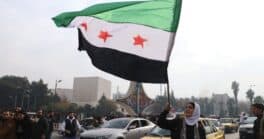African sovereigns and banks are looking for alternative funding sources as their access to the eurobond market dries up.

As the eurobond market sags under high interest rates, foreign exchange headwinds, and elevated inflation, sovereign borrowers are increasingly focused on domestic capital mobilization and obtaining concessionary loans and advances from multilateral funders like the International Monetary Fund (IMF) and World Bank. The trend is especially noticeable in Africa, where many governments face challenges such as a worrisome security situation including both food insecurity and a threat of coups.
Worse still, the long-term impact of government fiscal precarity, stacked against the need for social spending and the demand for key imports, is elevating the possibility of defaults. Zambia and Ghana have already gone through the painful process, although these two African sovereigns obtained some respite in the form of agreements to restructure their foreign currency debt.
With its large need for capital to fund infrastructure development, food importation, and offshore payments for key services and commodities, Africa had emerged as a major customer on the eurobond market. The United Nations Economic Commission for Africa (Uneca) noted in August that the “number of African States issuing sovereign bonds on the international markets has increased,” along with an uptick in the number of such issuances.
International bond offerings by African countries on the international bond markets rose from four in 2011 to 11 in 2014, Uneca reckons. In 2018, the value of African new sovereign eurobonds reached $29.6 billion. According to the IMF, the stock of sovereign African eurobonds reached $140 billion three years later, with the proceeds mainly dedicated to infrastructure, technology, and skills development.
“The increased bond issuances have meant African countries have increased their weight in the main emerging market bond indices,” the IMF said last year. “The bulk of the issuance had been by Africa’s larger emerging economies, including Egypt, South Africa, and Nigeria. But when compared to the size of their economies, issuance by the frontier economies of Ghana, Zambia, Senegal, Gabon, Ivory Coast, and Angola was sizeable.”
Overextended
Since then, however, the multipronged financial and economic crisis in international source markets and in African markets has made eurobond issuance by African countries less sustainable. With the impact of Covid-19 still not fully eased off and the disruptions from the Russian invasion of Ukraine still pinching, African sovereigns have plunged into further domestic turbulence. Combined with persistently weak commodity prices, the result is less availability of foreign exchange.
“In the primary market, flight to safety since the war in Russia and Ukraine was launched has caused an outflow of capital from the continent,” says Benjamin Boachie, chief economist at SecondSTAX, a Ghanaian securities trading platform.
The current inflationary trend across the continent is also adding to “a generally difficult macroeconomic backdrop” for African countries, he says. Many African sovereigns already have “dollar denominated debt laden balance sheets” that are “weighed down by their past forays into the eurobond” arena.
Gabon, an OPEC member country with $2 billion worth of outstanding Eurobonds, just suffered a coup. Foreign exchange shortages have also been worrisome in Egypt, Nigeria, and Kenya.
Debt pressures have spiked for Kenya since 2022, given that it has six eurobonds outstanding worth US$7.1 billion, according to the Economist Intelligence Unit. Analysts at the EIU reckon Kenya “will face a potential crunch point in June 2024,” when a 10-year eurobond worth $2 billion comes due, “unless a yield retreat allows for refinancing.”
On the other side of the continent, Ghana failed to settle principal and interest payments on a further eight US dollar-denominated eurobonds after announcing a default on its international foreign currency obligations last December.
The government of Cameroon, rattled by insecurity in some regions, made late payments in 2022 on some long-term foreign-currency commercial debt instruments. S&P Global Ratings pronounced this a “selective default,” although it was followed by a series of restructurings with the state’s creditors.
It’s not just African sovereign debt that accrued an overhang of foreign currency debt in recent years. African banks, according to a recent Moody’s report, have also taken on foreign currency loans from multilateral development banks and now face challenges repaying.
Moody’s cited banks in Kenya, Nigeria, South Africa, Egypt, and Ghana as having benefited from facilities that allow them to on-lend to other parties such as other companies and commercial ventures for economic development ventures. Under normal circumstances, this form of lending can typically qualify as tier 2 capital and is more attractively priced than other market funding sources, but is now viewed by international investors as possibly problematic.
“Aggressive rate hikes in developed economies, as well as the spillover effects of the Russia-Ukraine war on emerging economies means investors are shunning riskier assets and seeking attractive yields in more mature markets,” Moody’s says. “Very few African sovereigns, including Angola, Egypt, Nigeria, Morocco (Ba1 stable), and South Africa have issued eurobonds in the last 18 months”
Over the course of last year, sovereign yields spiked by more than 650 basis points for African countries and by about 400 for Latin American states. This has effectively excluded the African continent from international capital markets, a situation that is likely to continue throughout the current year and beyond.
Looking For Other Sources
The eurobond squeeze is forcing African sovereigns to switch their attention to local sources of capital through local-currency treasury bills.
In July, Zambia secured a $189 million extended credit facility from the IMF, which had already approved a similar $3 billion deal for of Ghana, about $600 million of which had already been disbursed.
“The hunt for alternative forms long-term financing has brought some African governments to multilateral institutions like the IMF and the World Bank seeking concessional loans, as well as scaled-up lending from bilateral lenders, particularly China,” says Stanley Emmanuel, head of partnerships at Lagos-based credit solutions provider, Angala Fintech, along with “innovative financing methods like social impact bonds, green bonds, and diaspora bonds.”
Other economists argue that a better alternative for Africa would be to seek funding from Eastern countries such as China that do not demand difficult-to-implement structural adjustments that could prove to be. China has also been more inclined to grant relatively better debt restructuring terms as was the case with Zambia recently
In Western source markets for capital, mainly in the United States where the Federal Reserve’s credit-tightening policy since March of last year hiked rates from 0.1% to 5.25%, economic conditions have been tough, notes Rufus Kamau, market analyst at FXPesa, a Kenyan global broker.
The tighter conditions in the US have resulted in a strengthening of the “dollar against African currencies and increased their interest payments on debt,” says Kamau.
“This led to a dollar shortage, outflow of investors as their currencies depreciated, and further pressure to keep borrowing from the IMF and the World Bank,” Kamau adds.
Whether local lenders and multinationals can come close to duplicating the volume of lending that African governments and banks were once able to secure through the eurobond market, and on what terms, remains to be seen. However, Emmanuel says “it is important to keep in mind that the situation of drying up eurobonds could change rapidly, particularly given that the initial sell-off in African eurobonds was actually triggered not by any risk increase in Africa, but because investors were looking to reduce exposure,” following the Swiss and American bank failures, mainly in the first quarter.



